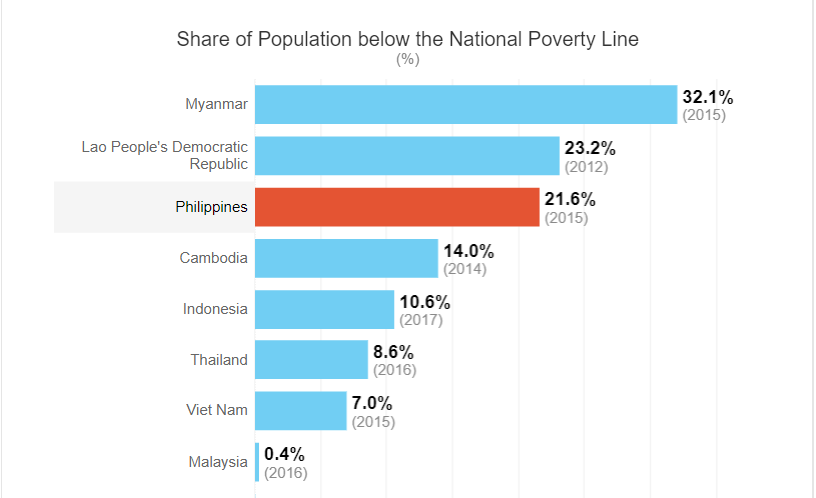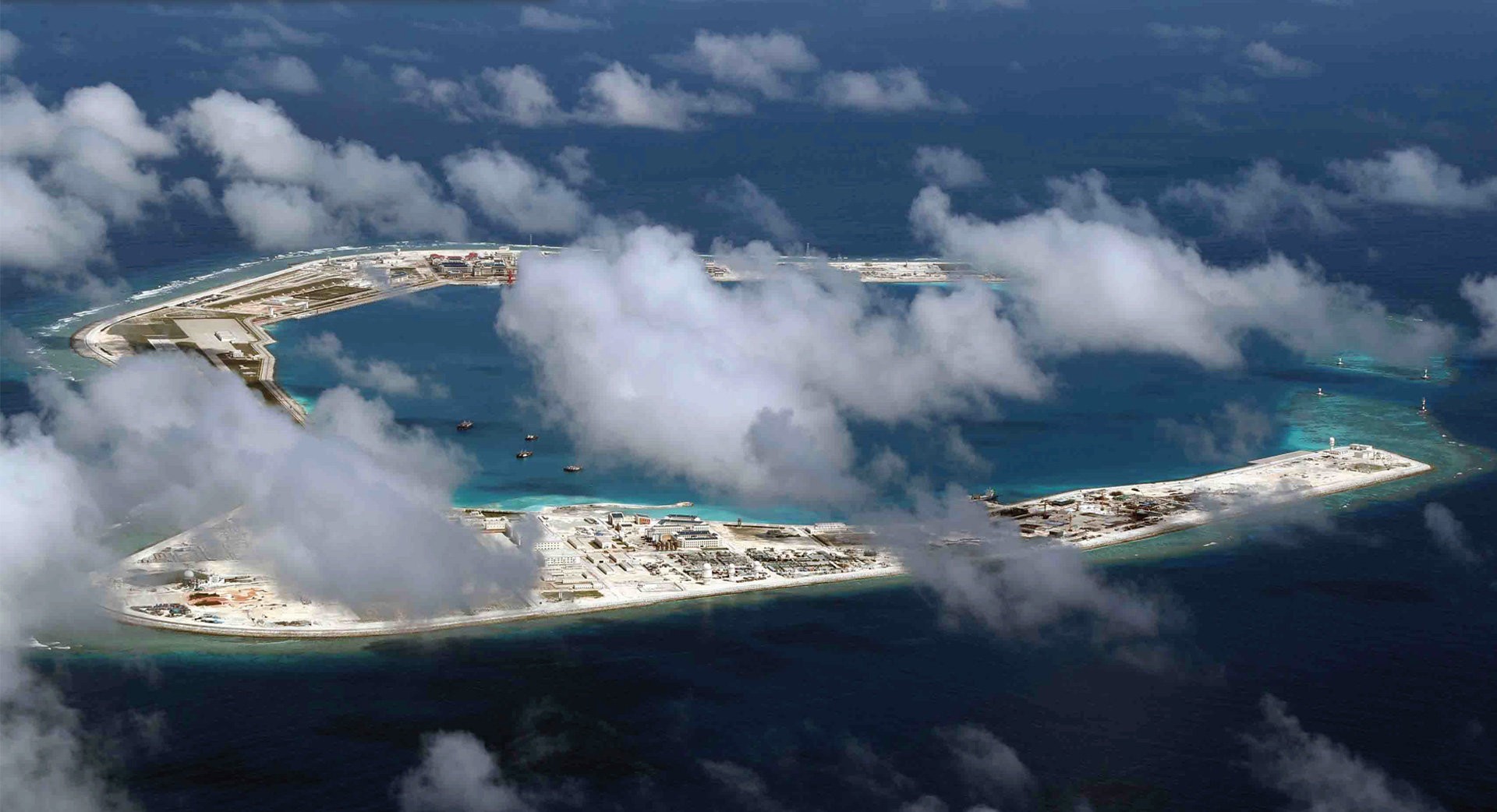History

For a small island nation, the Philippines has a rich history of fighting for freedom. Ever since the Spaniards claimed the Philippines for their own, the Filipinos have been struggling for their liberation.

Spanish rule lasted from 1542-1898. During this period, in 1896, the Filipinos rebelled against their rulers. However, instead of self-rule the Philippines was ceded to the U.S. as a result of the Spanish-American War. Fortunately, the U.S. had guaranteed the Philippines independence, which they gained a glimpse of in 1935 with the establishment of the Commonwealth of Philippines under Manuel Quezon as its first president.
The Filipinos’ freedom was short-lived as World War II came and took it away. In 1941, Japan had seized the Philippines. But, in 1944 the U.S. retook the Philippines. Finally, in 1946 the Philippines regained their independence and become known as the Republic of the Philippines.

(Google Images)
Freedom was still a major issue even after the Philippines became their own country. From 1965 to the present, the nation has struggled again and again with corrupt leadership. One of the worst examples is Ferdinand Marcos.
He was inaugurated in 1965 and he held presidency until 1986, before fleeing to Hawaii. He is well known for his authoritarian rule. Marcos declared martial law in 1972 and he used this opportunity to solidify his political dominance; he jailed rivals and used the military as a tool for suppression. After the end of martial law, Marcos manipulated the constitution to continue his tyrannical presidency.

(Google Images)
After the election in 1986 where Marcos “won” again, the Filipino citizens were fed up with the injustice of their president and revolted. Mass protests occurred and pressured Marcos to remove himself from his position. This movement became known as People Power and occurred again to face off against other corrupt leaders. The demonstrations resulted in Marcos fleeing to Hawaii.
Evidence shows that he and those close to him (family and close affiliates) stole billions of dollars from the Philippines economy. Corazon Aquino, Marcos presidential successor, set up the Presidential Commission on Good Government in order to retrieve all that was stolen. To this day the PCGG still works to collect everything that was taken when Marcos fled.
Other corrupt presidents that plagued the Filipinos’ governments are Joseph Estrada, Gloria Arroyo and even the current leader Rodrigo Duterte.
Another major Filipino event is the Moro conflict. Many of the confrontations occurred in the southern Philippines in Mindanao, where most of the Muslims reside within the country. There the followers of Islam are known as the Moros (Moors), a name bestowed to them by the Spaniards .
In 1971, Nur Misuari founded the Moro National Liberation Front (MNLF). This marked the beginnings of the Moro conflict, which in actuality is a period of clashes between Muslim separatists and the Philippines government. The MNLF (and subsequent groups) fight to obtain an independent Moro nation.
Along the four decades the armed rebels battled, the MNLF had a series of fragmentation. One group that arose from this was the Moro Islamic Liberation Front (MILF) which was founded in 1981 after Salamat Hashim, its leader, left the MNLF. This branch of the Muslim separatists is the largest, but not the most extreme.
Abu Sayyaf is the smallest and most radical Islamic separatist group which was created in 1991 by Abdurajik Abubakar Janjalani after leaving the MNLF. These rebels are the most dangerous as they are known for kidnapping and bombing.
Many times these groups and the Philippines government had tried reaching a compromise in order for peace, but as of yet no deals have lasted. One of the most recent occurred in 2015. Former President Benigno Aquino and the MILF signed a peace deal that creates the Autonomous Region in Muslim Mindanao (ARMM) in exchange for an end to their armed resistance.
However, the war continued on. In 2017, a five month long siege happened in the city of Marawi. Under the influence of ISIS, members of Abu Sayyaf and Maute began firefights with government forces. The result of the battles left the city in complete ruins and hundreds dead.

In the wake of the Battle of Marawi, the Philippines managed to take a significant step into lasting peace. In July 2018, Duterte signed the Bangsamoro Organic Law. Under this act, it abolishes the ARMM and forms the Bangsamoro Autonomous Region in Muslim Mindanao.
At face value it may seem strange that implementing another autonomous region with a slight name change is a huge deal, however, Bangsamoro, which translates to Moro nation, is a complete revamp to its predecessor. The introduction of this new “nation” removes the old, corrupt governing body and allows for the opportunity of a more just and sustainable government to take control.
This new government of Bangsamoro is a parliamentary democracy with a chief minister and an 80 member parliament, instead of ARMM’s regional governor and small executive council.
There is a 75-25 percent tax sharing where only 25 percent will be given to the national government. In addition, Bangsamoro will receive an annual block grant of up to five percent. These resources should help the “nation” in institution building and have a smoother political transition.
The People
The Philippines boasts the 13th highest population with an estimated 107,776,416 people. Filipino is the nationality of the country. However, there are over 100 ethnic groups from the islands’ many indigenous people. Some of the more well-known and larger Filipino ethnic groups are: the Tagalog, the Bisaya, the Cebuano, the Ilocano, the Hiligaynon/Ilongo, the Bikol, the Waray, the Pampango, and the Pangasinan.
The two official languages are Tagalog and English. But, since there is a very diverse range of ethnic diversity in the Philippines there is a similar amount of dialects. These languages also carry the same name as the ethnic group that speaks them. For example, the Ilocano peoples speak Ilocano. In addition, it’s common for Filipinos to speak multiple languages and dialects and become proficient in each.

The main religion of the Philippines is Roman Catholicism. Contrary to the vast assortment of ethnic groups, the country only has a few practiced religions. There are also Filipinos who follow Protestant denominations and some who are adherents of Islam (mainly in the southern islands).
Government
The Philippines’s government is a democracy, similar to that of the United States. There are three branches of government: executive, legislative, and judicial. These branches function exactly the same as their U.S. models and also maintain the same subdivisions such as the legislative’s senate and house of representatives. However, what differentiates the two nations is that the Philippines is a unitary state where the president is head of both state and government.
Although the nation is labeled as a democracy, the Filipino history is also marked with times that reveal anything but. This is especially the case for the period under President Marcos and can also be seen with the current leadership of Duterte.
Economy
The Philippines has gained a more industrial and service oriented economy compared to its agrarian beginnings. One of its major industries is agribusiness which includes processed fruits and vegetables, seaweeds, tropical fruit purees and juices, fresh tropical fruits, mango seed oil, sugar plantation, bio-ethanol, bio-fuels and coco methyl ester. Another important industry is manufacturing that involves mining and mineral processing, pharmaceuticals, shipbuilding, electronics and semiconductors.
On a side note, the Philippines electronics industry has been steadily rising to become a significant factor to the nation’s economic success
Integrated circuits, office machine parts and computers are the country’s top exports. In comparison, the top imports are integrated circuits (which they import less than they export), petroleum and cars. There is a trade deficit, however, where the Philippines is exporting $99 billion worth of goods, but importing $105 billion resulting in a negative trade balance.
In accompaniment with the industrialization of the nation, the population below the poverty line has decreased thanks to the following economic growth. The percentage of those below the poverty line has dropped from 26.6 percent in 2006 to 21.6 percent in 2015.

What’s surprising about the country’s GDP is that it has been performing well under President Duterte, despite his questionable human rights policies. The Philippines GDP is at $313.6 billion (2017). There has also been growth in the GDP per capita.

Conflicts
Apart from the Philippines’s decades long internal conflicts within its now, newly formed Bangsamoro region, the country has had issues externally as well.
China and the Philippines have been on rocky water since 2016. Their main point of conflict is the South China Sea. These waters have been the focus in major territorial disputes between the two countries (as well as some others).
There are a few important aspects of the South China Sea. First it is an important ocean trade route. A third of all global shipping travels through these particular waters.
This oceanic region is also a host to an abundance of unearthed resources, mainly oil and natural gas. There could be up to 125 billion barrels of oil and 500 trillion cubic feet of natural gas untapped beneath the sea.
The major issue is that China has been reclaiming land in the South China Sea. Not only that, but they are creating man made islands that once remained sunken underwater. On top of these islands the Chinese are installing military outposts.

China continues to expand their reclaimed land which is adding further tension to the situation. Last month Duterte, in response to Chinese vessels surrounding Pag-asa, a disputed island, has threatened China to stay away or the Philippines will seek military action.